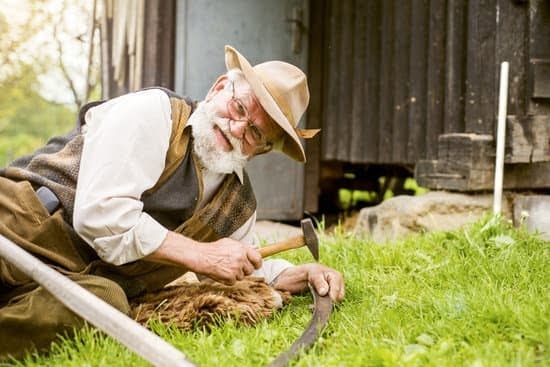Introduction
Storing gardening supplies correctly is an important step to maintaining your garden and extending the life of your tools. Organizing and keeping all of your gardening supplies in one place will save you time and energy, while also reducing clutter. Here are some tips on how to store your gardening supplies efficiently.
1. Make sure you have the appropriate storage space for all of your items: Depending on what kind of gardener you are, outdoor gardening requires different types of storage from indoor gardening. Outdoor gardening supplies like long-handled tools, rakes, spades, power tools for lawn care, etc., should be stored in a shed or garage that is waterproof and secure enough to keep unwanted intruders out. For smaller items like shears or hand trowels, baskets can easily be stored in an outdoor cupboard or sheltered area. Indoor gardeners may use cabinets or closets for storing their flowers and other plant equipment, with shelves being used for lighter items such as small pots and planters.
2. Label Your Storage Areas: Label each storage container by type of item so it’s easy to locate different pieces when needed. Use color coded stickers or laminated labels so they don’t fade away over time. Color coding will also make it easier to identify which piece belongs to which task when bringing various accessories outside each time you garden.
3. Keep Supplies Clean & Ready To Use: Wipe down tools after every use with a damp cloth before putting them away in order to prevent corrosion or rusting due to exposure to moisture outdoors or indoors over extended periods of time. Sharpen blades with oilstone if necessary for optimal results when cutting through soil and trimming plants—this step increases the lifespan and usefulness of these items too! Grease handles often if made from wood—this will prevent cracking and make them last much longer as well!
Assessment
1. Assess your gardening supplies, tools and materials in order to determine the most efficient way to store them. Make a list of all the items you need to store.
2. Consider the space available for storage in your home. Measure carefully so that you can find appropriate containers or shelves to hold the items you need to store.
3. Organize the gardening supplies into categories such as garden tools (spades, trowels, rakes, pruners, etc.), seedlings and other small plants, fertilizers, watering cans and hoses, and others like potting soils or edge/rock borders and trellises/stakes.
4. Get clear plastic bins or wire shelving on which to set up an organized system of supplies storage depending on what is most suitable for each category of item you need to store. Ensure that there are identifiable labels attached and arrange these so that it is easy for everyone who works in the garden area to know where certain items should be stored away after use.
5. Store the heavier items such as soil at a lower level so it won’t fall over due to its weight when it is moved around or accessed from above by someone handling lighter items on shelves above them in height.
6. Purchase any additional small tools or supplies needed for an efficient garden setup such as trowels with extra-long handles that can easily be hung from pegs/hooks on walls rather than taking up valuable floor space when stored away during non-seasonal times; also nesting containers with tight fitting lids help keep weed seeds out while also providing efficient storage solutions by occupying less floor space when they are not in use yet still offering organized retrieval once required in future seasons!
Containers and Shelving
When storing gardening supplies, one of the best solutions is to use containers and shelving. It’s important to stay organized, so consider labeling all of your containers accordingly so you can easily find the things you need. Clear plastic bins with permanent markers allow for quick and easy organization, and these can be placed in the garage or shed. For larger items, you can consider storing them on shelves that line the walls in your workspace area. Investing in heavy-duty shelving that is made specifically for outdoor use is recommended, as this will ensure your gardening supplies are protected. As an added bonus, shelves not only help you store a wide range of items while saving space; they also keep supplies off of the ground, thus avoiding potential damage due to contact with moisture or dampness in some outdoor locations. You may also want to look into mobile carts, rolling galvanized steel rack units and wheelbarrows that could make organizing a breeze. In addition, invest in waterproof storage bags and covers designed specifically for garden equipment such as hoses and watering cans to help protect them from both external elements like rain and rust from within.
Categorization
Categorizing gardening supplies can be a useful way to keep everything organized and easy to access. Start by grouping like items together, such as all of your hand tools in one place and all of your power tools in another. Consider dividing up categories into smaller subgroups, such as trowels and transplanting tools, making it easier to find exactly the right tool for the job. Storing bags or containers of soil amendments together helps ensure you have what you need on hand when preparing to add compost or fertilizer to your garden beds. Place frequently used items nearer the front and larger bulkier items towards the back of any storage space that you use so they don’t take up too much space. Additionally, store labels with your seed packets so that you know what is where if you choose to save seeds from one year to the next. Lastly, consider using airtight containers for perennials stored through winter months such as bulbs or divisions from perennials stored during cold weather months for replanting later in the season when temperatures warm again.
Labeling
Labelling your gardening supplies is a great way to make sure you can find what you need when you need it. There are a few different ways that you can label containers, depending on your preferences and what works best for your space. Labels can be either printed or handwritten, and tags or digital labels can also be added to each container. Labeling will help you quickly access and find items in your garden shed or other storage space, ensuring that everything stays tidy and sorted. You could even have a filing system if needed, with folders or shelves dedicated to certain categories such as tools, soil, seeds, etc. Labelling ensures that nothing gets misplaced and makes it easy to locate the different items when working in the garden without having to search around every time.
Climate Control
In order to properly store your gardening supplies, it is important to consider the temperature, humidity and lighting requirements that each item needs. Make sure they are stored in a place where there is proper climate control. Delicate items such as seeds should be stored in a cool, dry environment with low levels of light. On the other hand, things such as fertilizers or insecticides should be stored in a place without direct sunlight or high temperatures. Furthermore, soil mixes or mulches should also be kept away from light sources since the heat from the sun can cause them to decompose at a much faster rate. Additionally, some gardening supplies such as bulbs need different levels of humidity depending on the type and growth period of the plant. Therefore, ensure that you adjust the relative humidity levels of wherever you store these items accordingly so that they remain in good condition for use later.
Maintenance
Before storing gardening supplies, it is important to clean and maintain them. To ensure that the supplies work properly, follow these recommendations:
• Properly store all tools in a dry place. Make sure that any metal tools such as scissors or shears are coated with oil before storing them. Oiling will protect the blades from rusting due to exposure to moisture. Metal should also be wiped down and dried with a cloth before it is stored away.
• Chemical products used in gardening need to be stored safely and securely away from children or pets. Make sure they are kept in their original containers and have their lids on securely at all times. Label the containers clearly so they don’t get confused with other chemicals that may be used around the garden.
• Clay pots, planters and ceramic materials should be scrubbed clean after use then air dried completely before storage. Properly seal broken items or chips of ceramic in plastic bags when storing them away to avoid accidents.
• Garden furniture needs to be cleaned periodically by hosing off dirt and debris, followed by wiping with a dry cloth if necessary. Lastly, apply some type of protection such as wax, cream or oil on wooden or plastic furnishings to extend its lifespan from weather damage due to wetness or moisture buildup over time.
Conclusion
To ensure that your gardening supplies last for a long time, it is important to store them properly. Store them in a cool, dry location away from direct sunlight. Make sure the area is well-ventilated so that they can dry out between uses. When possible, it is best to store materials in containers with lids or covers to help keep them dust-free and avoid water damage. Taking steps such as labeling your items clearly and using shelves and bins can help you stay organized and keep track of what supplies you have on hand. Finally, remember to check periodically for any items that may need to be replaced due to wear and tear or natural aging. Following these guidelines will ensure your gardening supplies remain in good condition so they can be used season after season!

Welcome to my gardening blog! I am passionate about plants and enjoy sharing my knowledge and experiences with others. In this blog, I will write about everything related to gardening, from tips on how to get started to updates on my own garden projects.





